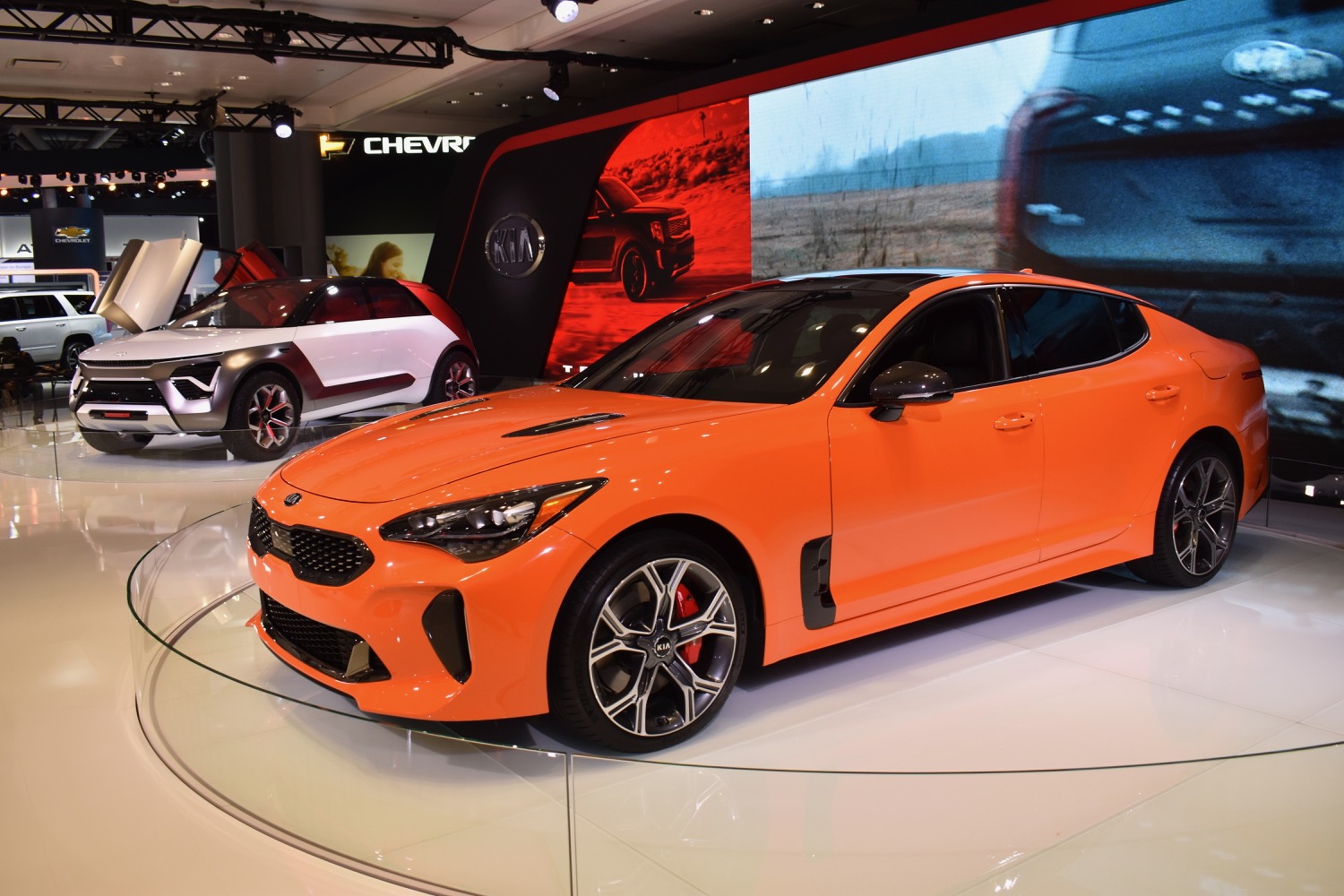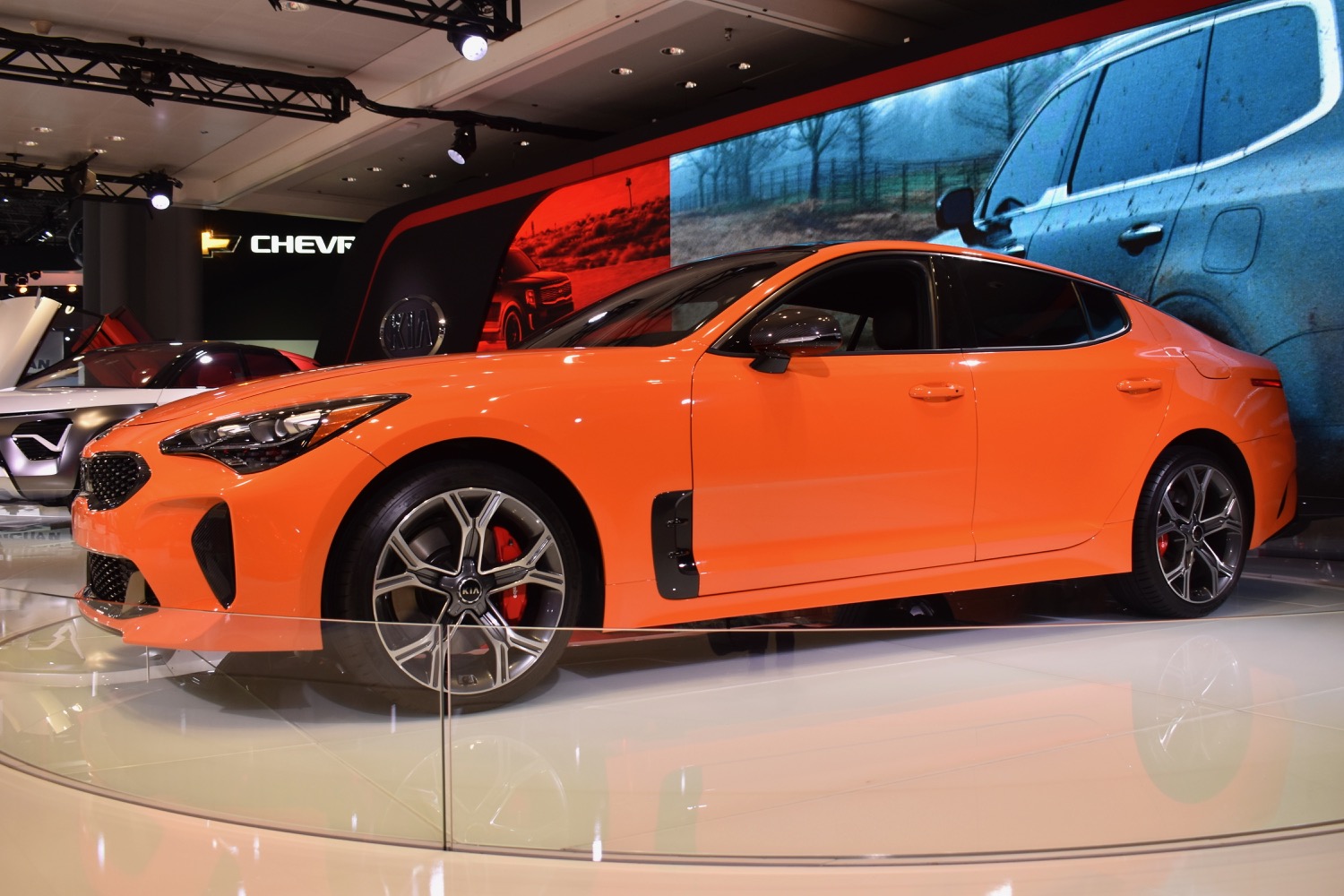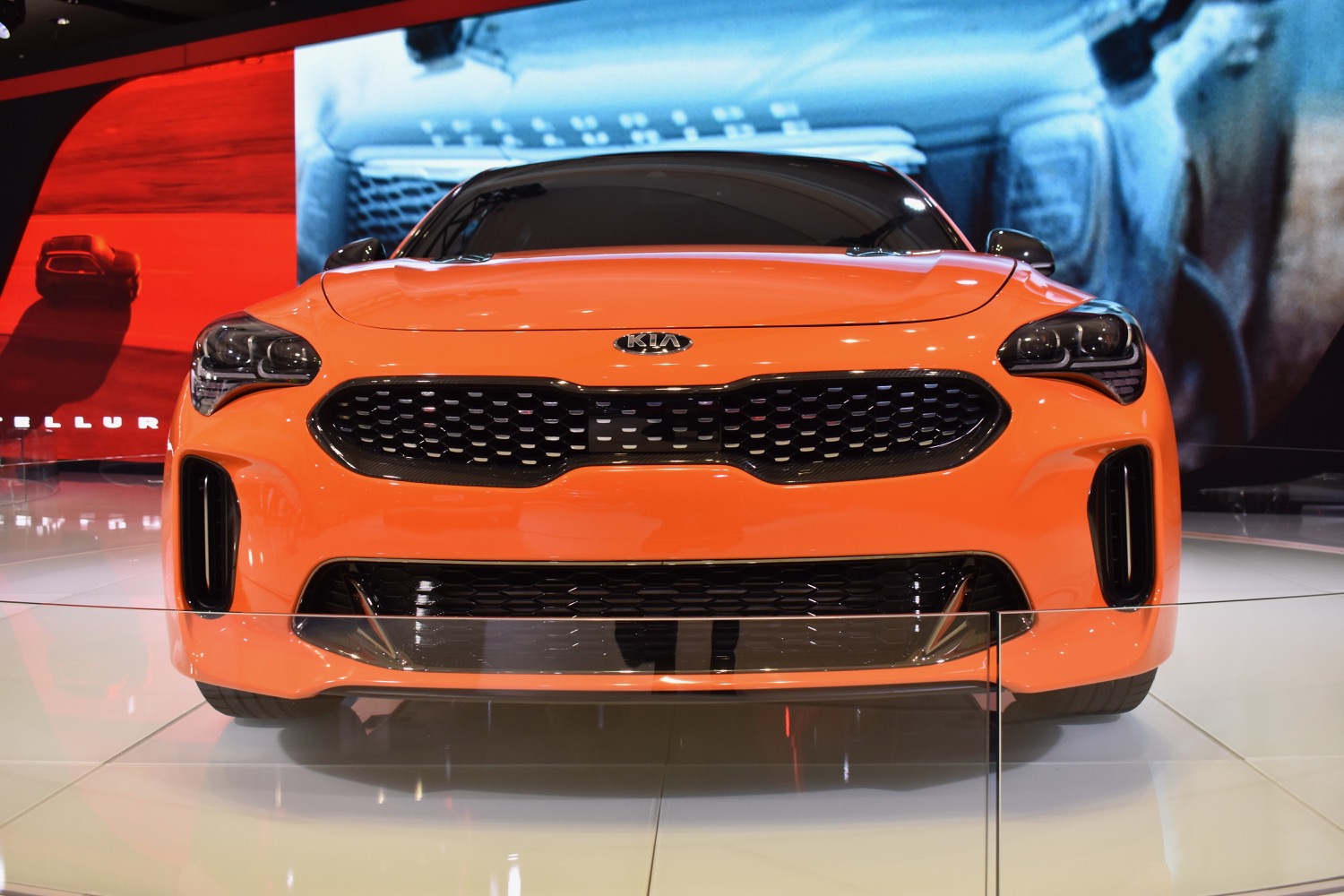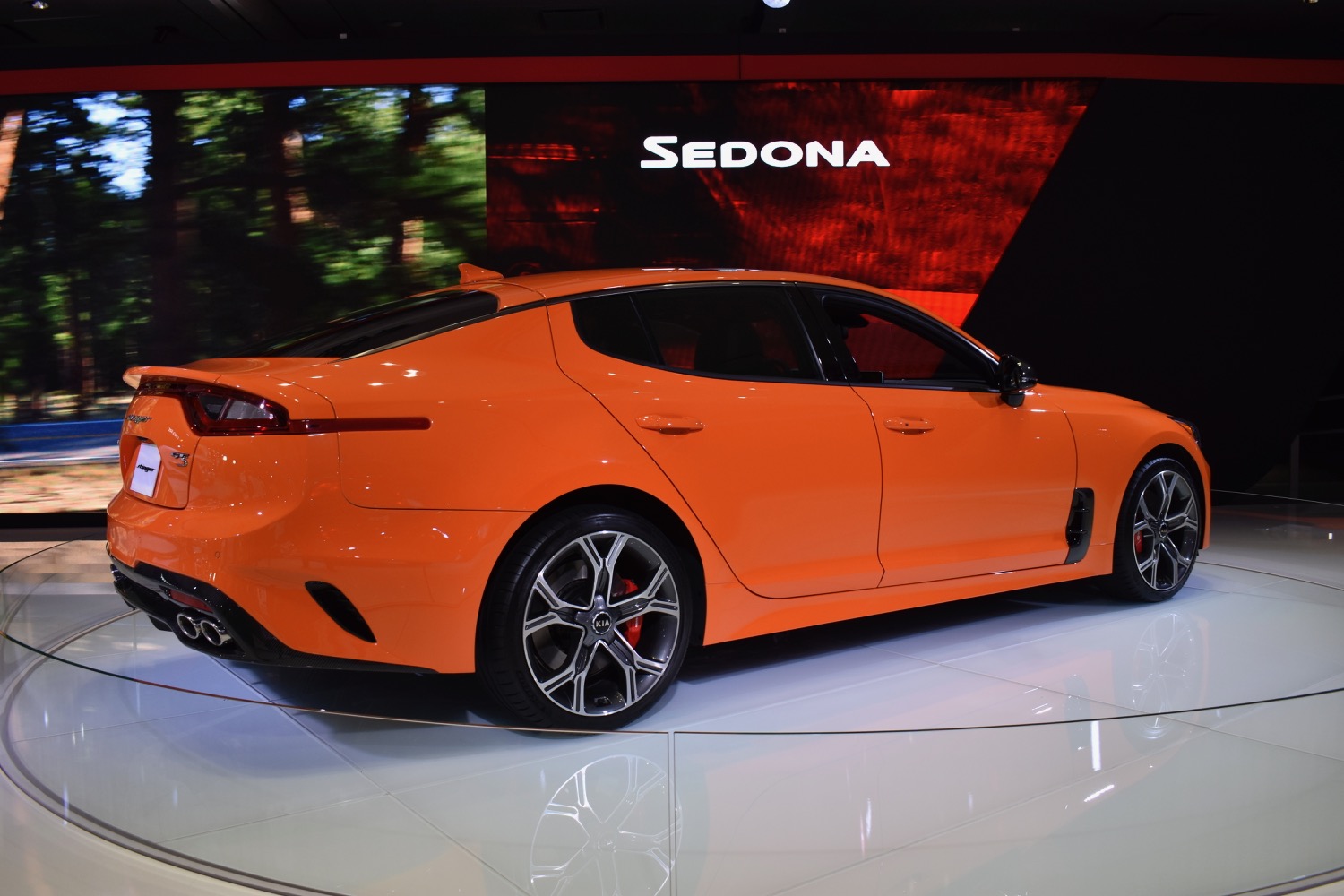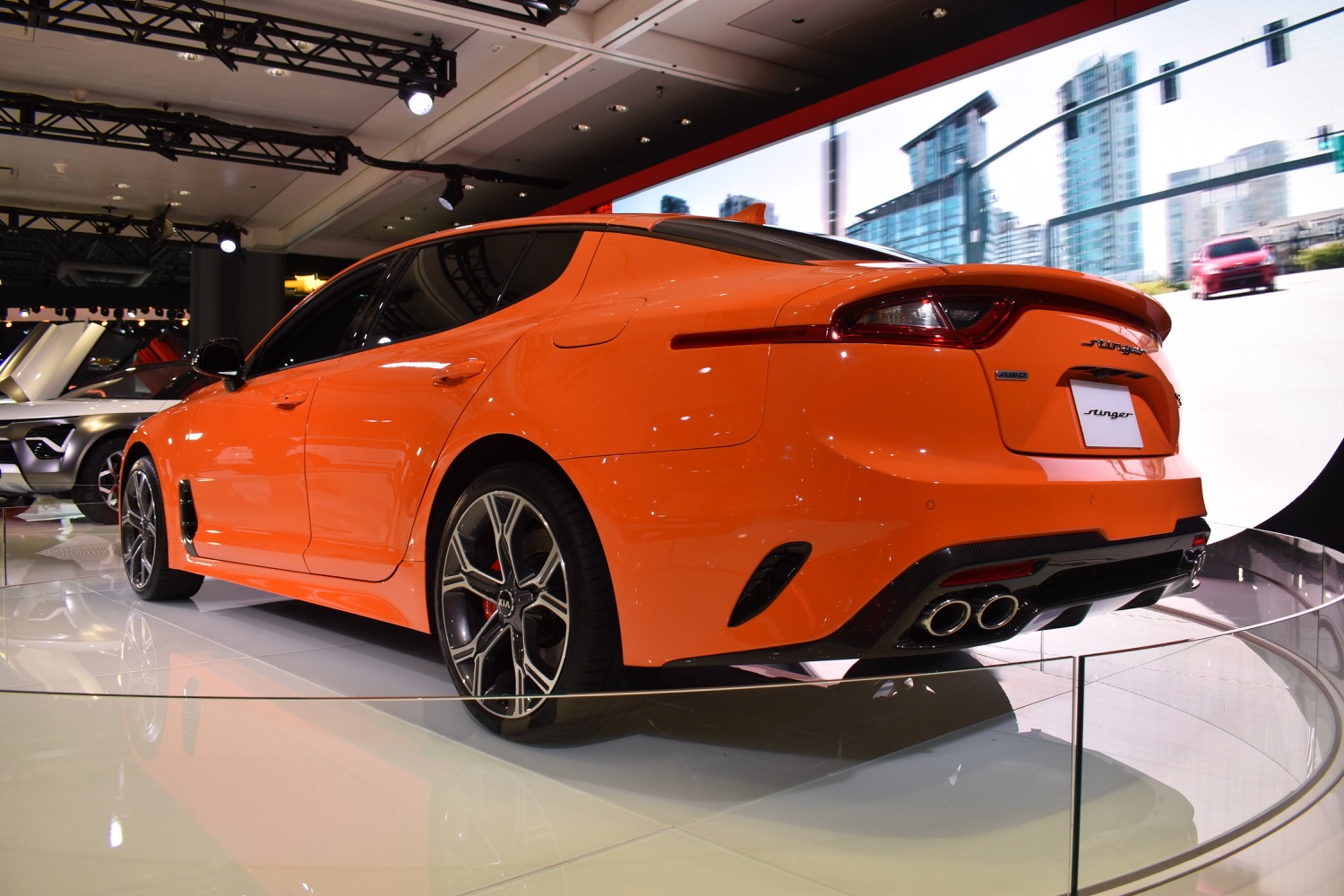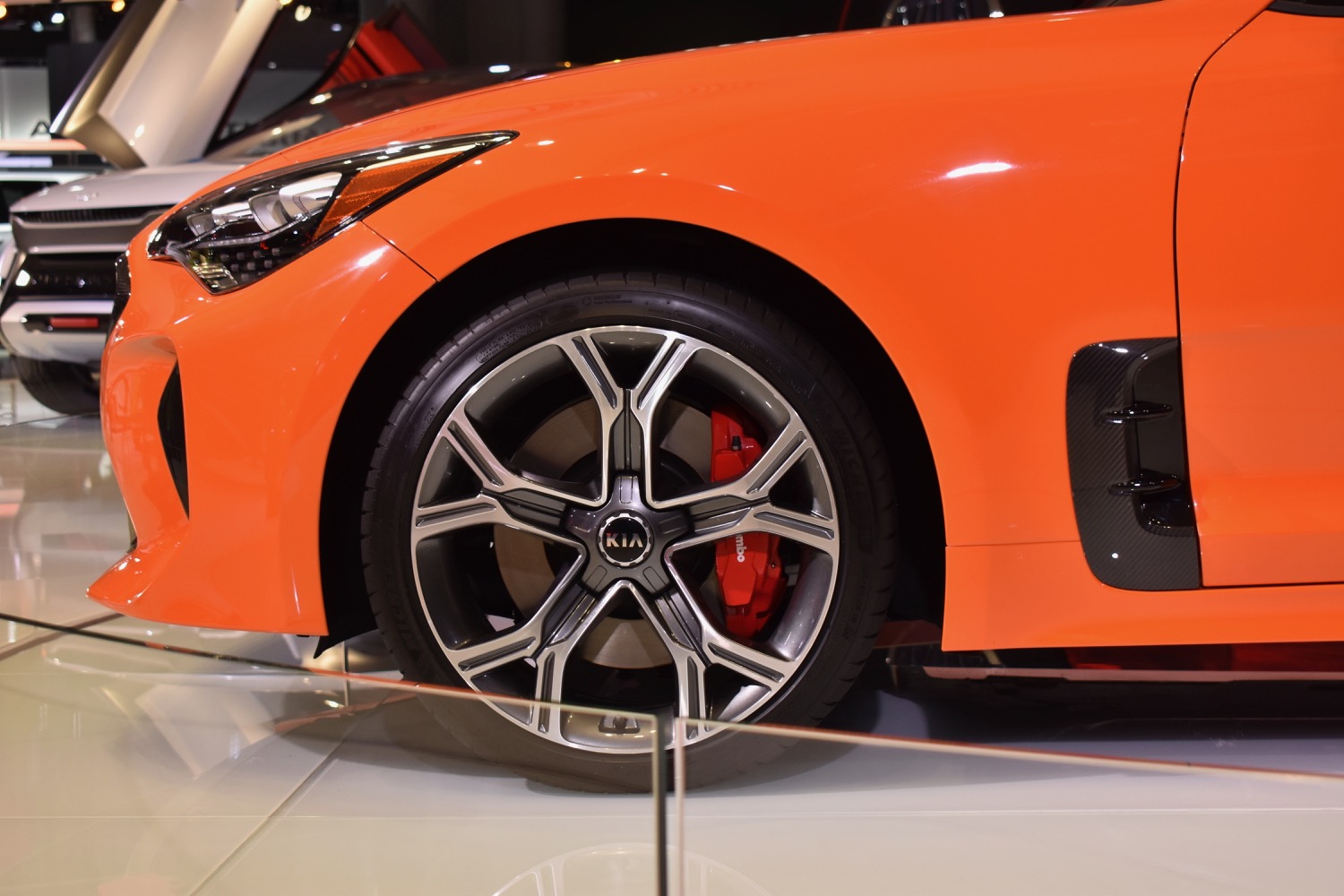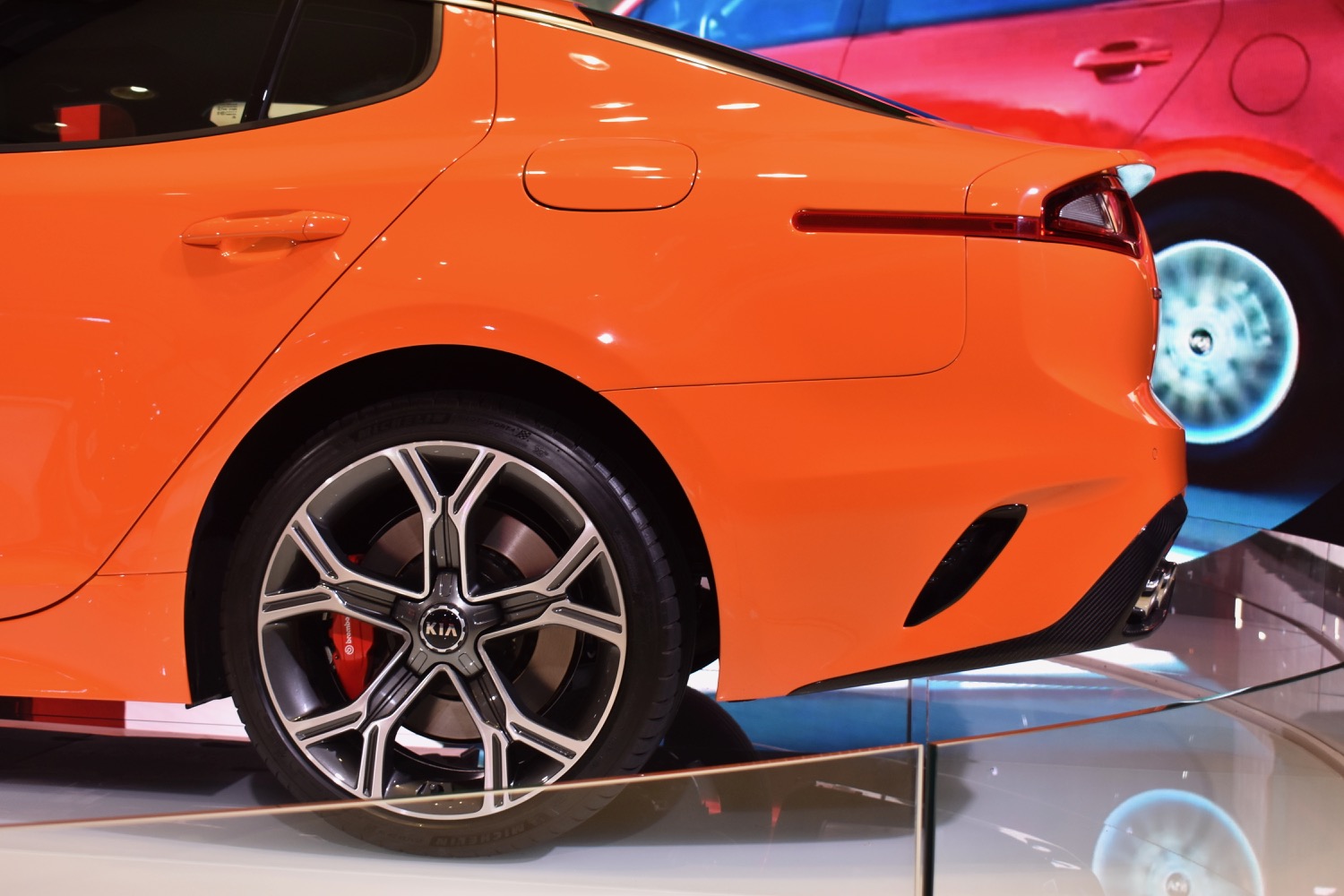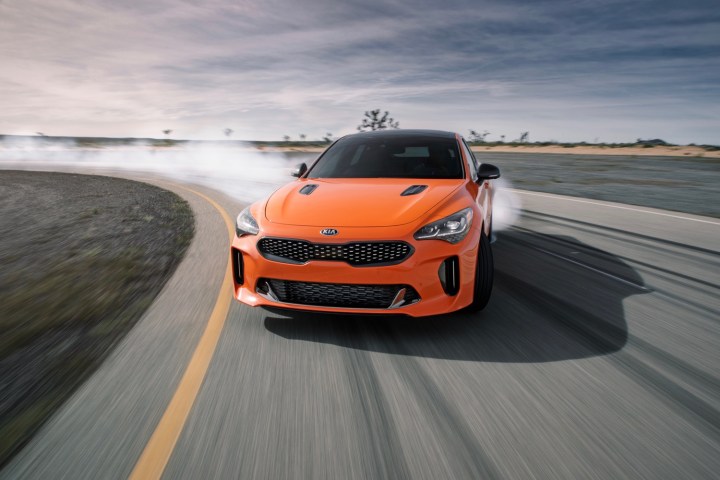
With sleek styling and an emphasis on sporty handling, the Kia Stinger was built to take on German sports sedans. It mostly succeeds, but there is always room for improvement. Debuting at the 2019 New York Auto show, the limited-edition Kia Stinger GTS aims for even more driving fun. It features a retuned-all-wheel drive system that lets the driver alter the behavior of the car.
The system, dubbed “D-AWD” starts out in “comfort mode,” with 60 percent of power sent to the rear wheels. “Sport” mode ups the ante, sending 80 percent of power to the rear wheels to give the Stinger a livelier feel. But the pièce de résistance is “drift mode,” which sends 100 percent of the power to the rear wheels. It also holds the automatic transmission’s gears without upshifting.
Kia isn’t the first automaker to try something like this. The BMW M5 and Mercedes-AMG E63 S can both disconnect their from axles, offering all-wheel drive stability when the driver needs it, and rear-wheel drive hooliganism when they want it. The discontinued Ford Focus RS also had a drift mode, designed to help the hot hatchback transcend its front-wheel drive platform and engage in sideways shenanigans.
Those cars all need drift modes to simulate rear-wheel drive, but the Stinger doesn’t. It’s already available with rear-wheel drive from the factory. The Stinger GTS will be available with rear-wheel drive, in fact. But Kia wanted to close the gap in behavior between all-wheel drive and rear-wheel drive Stingers. Hence, drift mode.
The Stinger GTS uses the same 3.3-liter twin-turbocharged V6 as the standard Stinger. The engine, which is shared with the Genesis G70 and G80 Sport, makes 365 horsepower and 376 pound-feet of torque. It’s available only with an eight-speed automatic transmission. Kia also offers a 2.0-liter turbocharged four-cylinder engine on lower Stinger trim levels.
Visually, the Stinger GTS is distinguished by a model-specific orange paint color, carbon fiber trim, and an Alcantara-covered steering wheel and center console. It also gets a sunroof, 720-watt Harman/Kardon audio system, and wireless phone charging.
The Kia Stinger GTS will be limited to just 800 units. Production is scheduled to start this spring, with pricing (before destination) starting at $44,000 for the rear-wheel drive version, and $46,500 for the all-wheel drive model with drift mode. That puts the GTS between the current Stinger GT and GT1 trim levels in price.
Updated on April 18, 2019: Added live photos.
